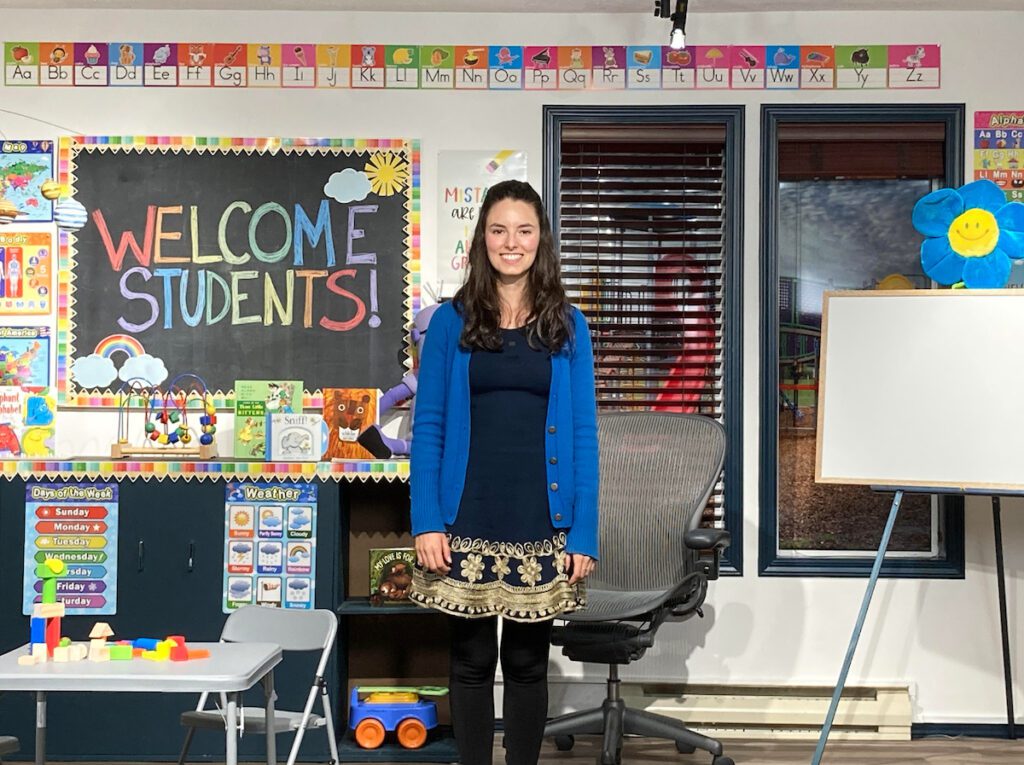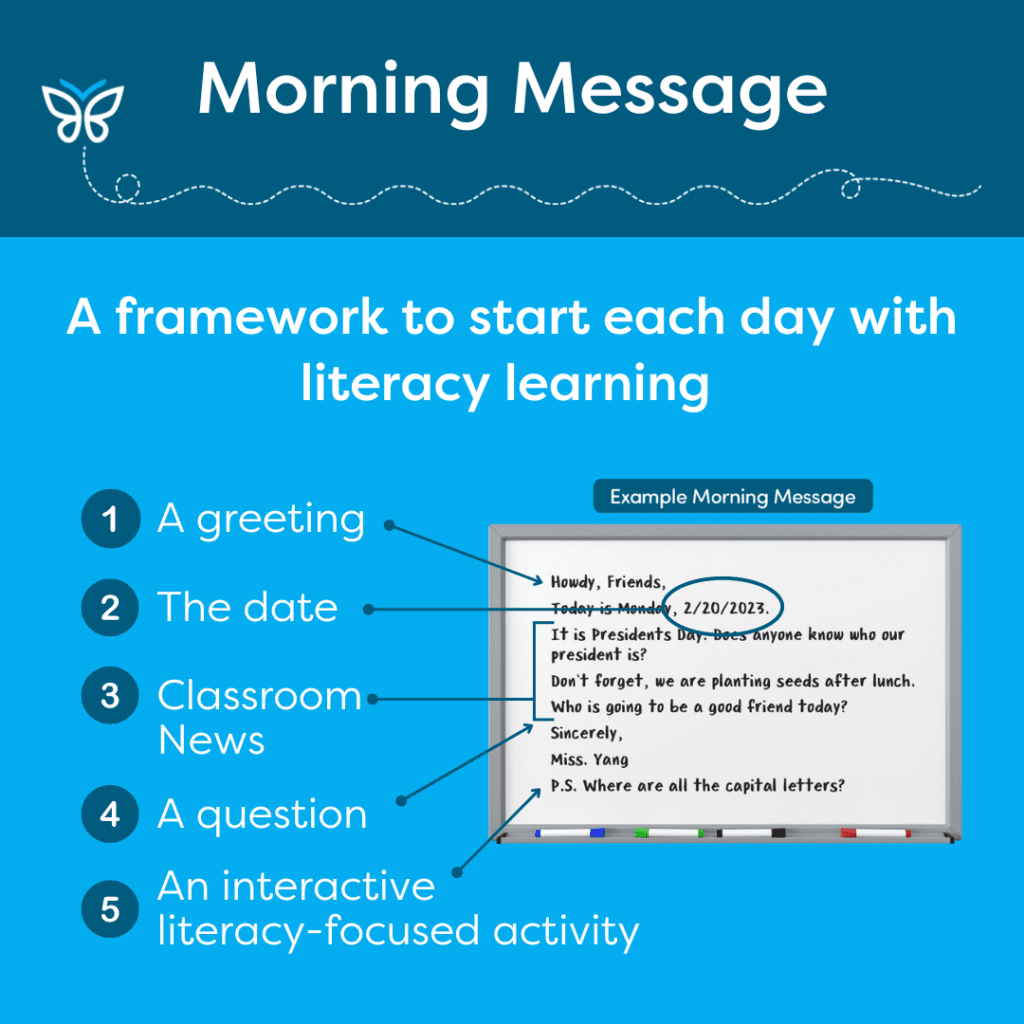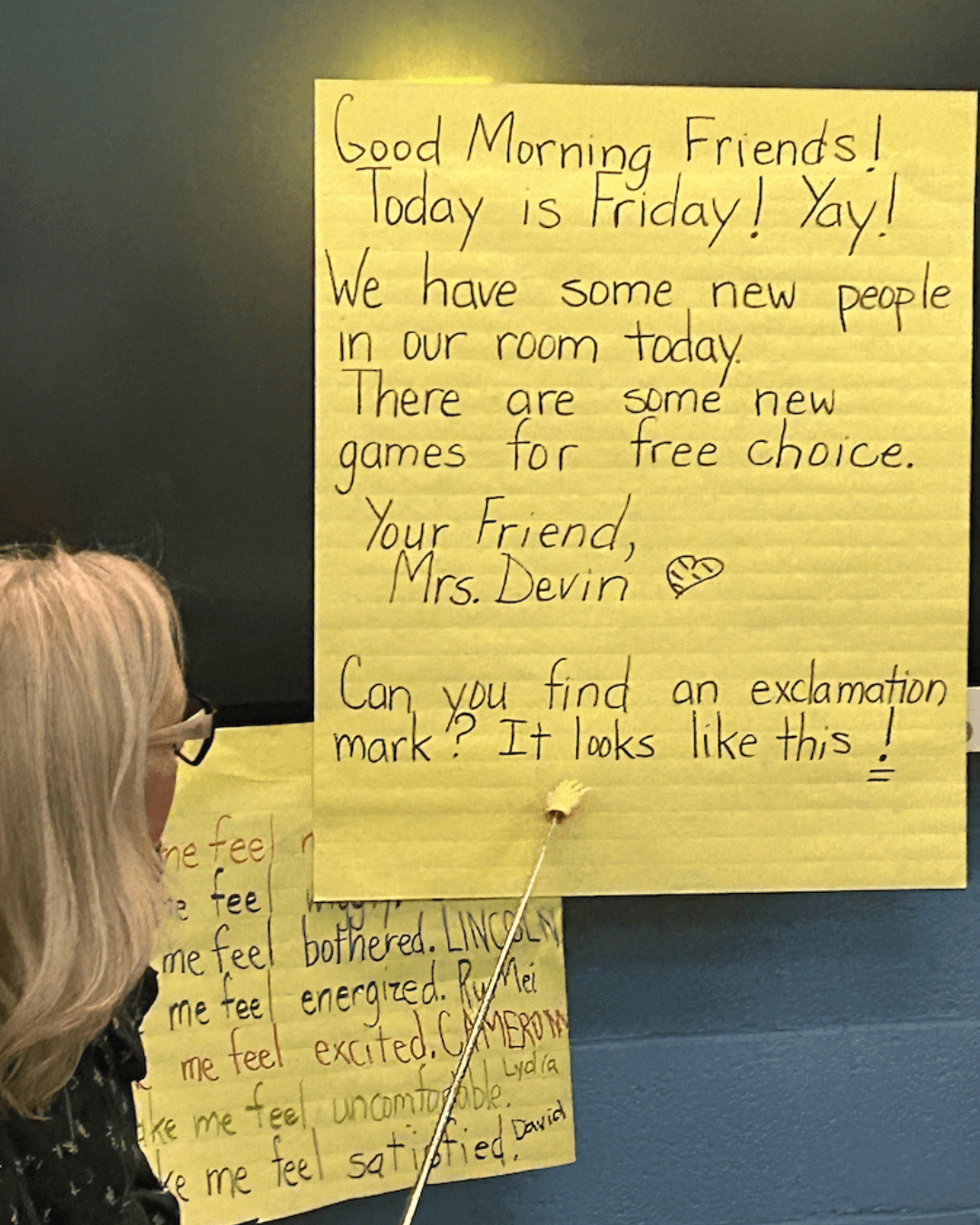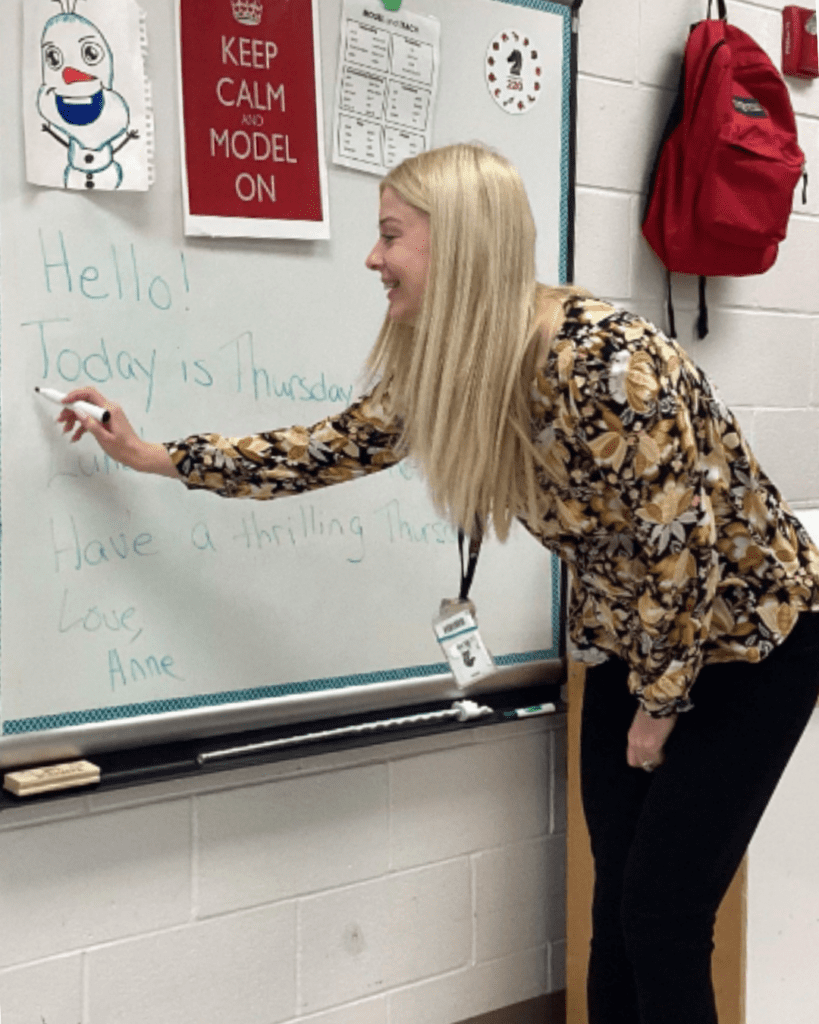Morning Message Ideas
for Preschool and Elementary Classrooms
In any classroom, the morning message can be so much more than a greeting. Written strategically, it can be a powerful instructional tool that establishes a routine to start the day and offers an opportunity for students to learn more about written language.
Messages can be written on an easel pad or a white board, and offer a quick and engaging way to welcome learners. These morning message ideas include elements to make them an effective way to also start the day with literacy learning.

Five Elements to Include in a Morning Message
To establish a routine, consider using a framework that includes these elements:
1. A greeting. Using the same greeting every day at the beginning of the school year, such as “Dear Students” or “Good morning!” to establish predictability. Later in the year, the greeting can be an opportunity to be playful with language. You can introduce new vocabulary words such as “Salutations” or even teach saying hello in different languages (hola, bonjour, ciao, etc.).
2. The date. As with the greeting, using the same written format for the date in the opening days of the school year establishes a routine. As the year progresses, it’s helpful for students to see the date represented in different forms: DD/MM/YYYY, MM/DD, DD/MM, etc.
3. The body. Ideally, the body is brief: three to five sentences long. Here’s a helpful formula to follow:
- Opening Sentence(s): About today (the weather, current events, anniversaries, etc.)
- Body Sentence(s): The body is usually three sentences long. Including a sentence about classroom news, a sentence about the past or future, and a question to facilitate discussion.
- Concluding Sentence(s): A question to facilitate discussion (can be related to current curricular content or can be more lighthearted, e.g., “Is cereal also soup?”)
4. The closing. The closing is where you sign the letter and include all the adults who work in the room.In the beginning of the year, it can be helpful to write the names of every adult in the room. As the year goes on, you can change the name of the signature every day; often, students get excited about this element of surprise.
5. An interactive literacy-focused activity. This can be anything from identifying punctuation and parts of speech to building vocabulary and phonemic awareness. Any element of print can be discussed – anything that helps reinforce learners’ understanding of print and/or any part of writing they are interested in.

Reading the Morning Message with Students
Use the message to help students learn about conventions and patterns in written language. Unlike predictable chart writing, where you write with students watching, it’s helpful to have the morning message written before students arrive so you don’t feel rushed
Consider this example:
Hello Learners!
Today is Tuesday, February 6th and the sun is expected to shine all day. Today we will be making book covers for our book party in two days. What else do we need to do to get ready? If you’d like to participate in the Valentine’s Day card exchange, please sign up.
Love,
Ms. Adair


Writing Effective and Engaging Morning Messages
Not sure how to get started? Check out our free templates to use with your own students.

